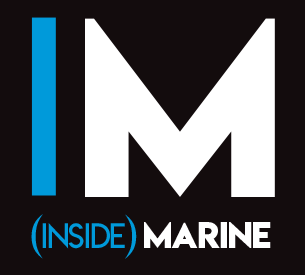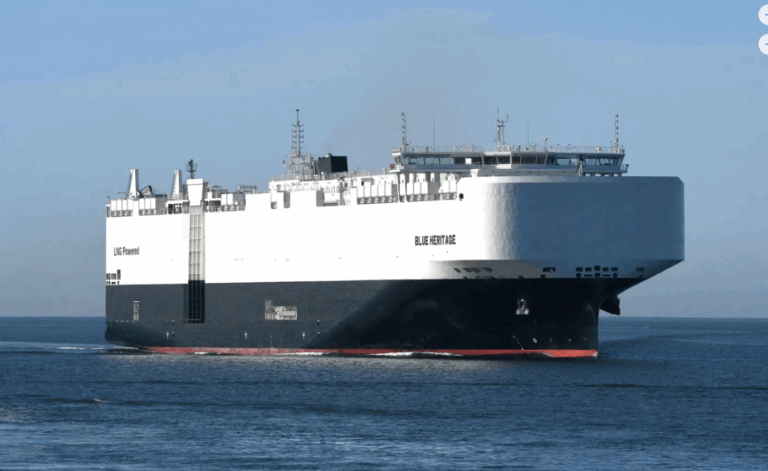United European Car Carriers (UECC) is boosting sailing frequency and capacity on its North-South trading network with the addition of the dual-fuel LNG PCTC Blue Heritage, as well as another port of call in Turkey, to meet growing demand for sustainable ship transport in the European shortsea trade.
“We are expanding our fleet with operation of an additional eco-friendly Pure Car and Truck Carrier (PCTC) that will enhance cargo-carrying capacity and flexibility for our clients on this major route, while further reducing the carbon footprint of their logistics,” said UECC COO Per Christian Mørk.
“The addition of the Blue Heritage will increase to seven the number of UECC vessels traversing this busy route, which means we will be able to offer a sailing frequency of 4.5 days from Turkey to Northern Europe – the highest in the market,” he added.
Strengthening low-carbon logistics
The 200-metre PCTC with capacity for 7000 CEUs across 12 decks – four of which are hoistable and suitable for High & Heavy (H&H) cargoes – is the sistership to the Blue Aspire, also previously taken under operation by UECC.
Like its sistership, the Blue Heritage is equipped with dual-fuel LNG engines that are able to run on liquefied biomethane (LBM), which has potential for significant emissions savings.
This has been demonstrated through UECC’s Sail for Change initiative, supported by major automotive manufacturers Toyota, Ford and JLR, in which LBM is being bunkered on other LNG-powered vessels in the UECC fleet. The programme primarily contributed to a massive reduction of 107,000 tonnes in well-to-wake CO2 emissions last year – an increase of 70% on 2023.
The Blue Heritage will be deployed on the North-South route spanning the Mediterranean and Northern Europe that is also being extended with the inclusion of the Turkish port of Yarimca for regular calls, in addition to Efesan and Autoport in Turkey.
Enhancing North-South service
This means there will be three vessels on a port rotation of Flushing, Zeebrugge, Cuxhaven, Vigo, Yarimca, Efesan, Autoport and back to Flushing. Another four vessels will run on the port rotation of Cuxhaven, Bremerhaven, Zeebrugge, Portbury, Vigo, Sagunto, Livorno, Piraeus, Autoport and back to Cuxhaven.
Now with seven vessels covering 12 ports on the key route, UECC is stepping up both service regularity and environmental efficiency in line with increasing contractual volumes from both existing and new customers, according to Mørk.
“Our North-South service is the largest loop we operate and as such absorbs also the largest number of vessels. By adding capacity, this enables us to add ports in co-operation with our customers to tailor-make services,” he explained.
“The flexible deck configurations of the Blue Heritage and Blue Aspire also provide versatility in handling a wide range of cargoes – from vehicles to rolling H&H and breakbulk equipment – in line with the diverse needs of customers.”
Reducing regulatory exposure
While improving its service for both current and future customers, the ongoing expansion of the UECC fleet is geared to progressively enhancing the sustainability of the company’s operations through wider adoption of alternative low-carbon fuels and operational measures to improve efficiency in line with the green regulatory regime.
UECC is already running a surplus in relation to Fuel EU Maritime, enabling it to eliminate surcharges for customers, while its fleet has a C-rating or above under the IMO’s Carbon Intensity Indicator (CII). The company’s strong environmental performance has also significantly reduced its exposure to the EU Emissions Trading System (EU ETS).
“Through proactive investments in fleet development and alternative fuels, UECC is steadily minimising its carbon footprint towards the goal of net-zero by 2040 and thereby reducing Scope 3 emissions for our customers in alignment with their sustainability goals,” Mørk concluded.
You can read more of the latest from the world of Marine here.


